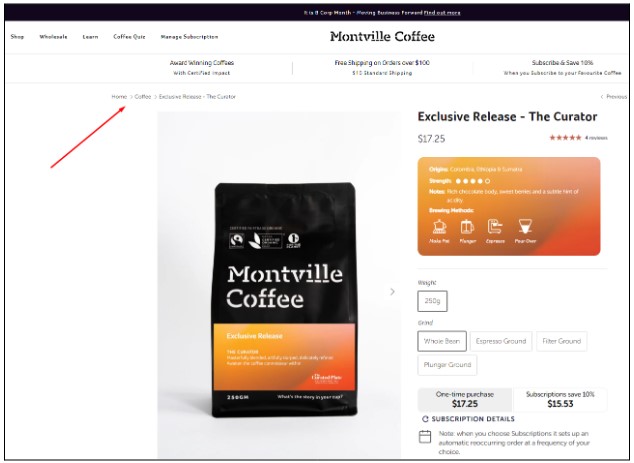74% of Consumers Are Likely to Switch Brands If They Find the Purchasing Process Too Difficult

Mariana Dourado | Apr 24, 2024
Reading Time: 5 minutesIn today’s ultra-competitive ecommerce landscape, creating a seamless and straightforward customer experience is paramount for success. A staggering 74% of consumers have admitted they are likely to switch brands if they encounter a purchasing process that is overly complex or difficult, according to a study by SalesForce. This statistic underscores the importance of simplifying the customer journey, as even minor hiccups can drive potential buyers away from your ecommerce platform and into the arms of your competitors.
To retain and attract customers in this climate, ecommerce businesses must prioritize streamlining every touchpoint of the customer journey, from initial product discovery to post-purchase follow-up. By implementing best practices that enhance convenience and reduce friction, companies can foster brand loyalty, drive conversions, and ultimately boost their bottom line.
Here are 10 best practices for simplifying the customer journey in ecommerce to improve the purchasing process:
1. Optimize Site Navigation and Search Functionality
Ensuring intuitive website navigation starts with a well-structured category architecture that logically groups products in a way that makes sense to customers. Category names should be clear and concise, using language familiar to users. Implement breadcrumb navigation to help users understand where they are within the site hierarchy.
Montville Coffee use breadcrumb to help users with navigation
Search functionality is critical for helping customers quickly find desired products. Leverage natural language processing to understand intent behind search queries and provide relevant results, even for misspellings or synonyms. Implement autocomplete and predictive search to guide users. Display results with product images, ratings, and key details.
Forever21 Search bar
2. Simplify Checkout Processes
Streamline the checkout flow by only requesting essential information like shipping/billing details and payment method. Eliminate unnecessary form fields. Use form validation to catch errors early. Provide a checkout progress indicator and a summarized order overview an integrate popular payment gateways like PayPal, Apple Pay, major credit cards for flexible payment options.
Shopify has actually simplified the checkout process by introducing the one-page checkout where users fill in all their information on one page compared to their old version where users had to visit three checkout pages – the information page, shipping details page and the payment page in order to complete the checkout.
An example of a one-page Shopify checkout
3. Leverage Responsive Design
Responsive design ensures an optimized experience across devices of different screen sizes. Implement a mobile-first approach with a simple, thumb-friendly interface for smaller screens. Adapt layout, navigation menus, image sizes, font sizes, touch targets for various devices.
Utilize responsive frameworks that handle the complexity of resolution and orientation changes. Ensure speedy load times through performance optimization techniques like compression, caching, code minification.
4. Incorporate Visual Product Representations
High-quality visuals are vital for showcasing products accurately online. Provide multiple image angles, zoom capabilities, 360-degree spin views for an immersive look at products. Complementing images with videos can further highlight features and usage.
StockX uses the 360-degree spin views to display their products on product page
Implement capabilities like augmented reality (AR) to visualize products in a real environment. User-generated images/videos that show authentic product depictions can build trust.
5. Implement Smart Filtering and Sorting Options
Layered navigation with filtering by multiple attributes (price, brand, size, color, ratings etc.) helps users quickly narrow choices. Implement range sliders for filters like price. Sorting options like newest, top-rated, price low-to-high allow prioritizing factors important to each user.
Dynamically update product counts when filters are applied. Save filter states so users can easily reapply previous filters. Surface top filter options based on data intelligence of common selections.
Southebys has provided product filters on their collection pages to help their customers find their products easily
6. Provide Clear and Transparent Pricing Information
Display the listed price prominently along with any discounted pricing information. Itemize costs for additional services like gift wrapping, extended warranties upfront during checkout. Clearly state any additional taxes or fees applicable in each geography.
Estimated shipping costs by region with final rates calculated during checkout provide transparency. For memberships, subscriptions, communicate any renewal pricing increases after promotional periods end.
Display of a discounted price
7. Offer Multiple Delivery and Return Options
Provide delivery speed choices – economy, standard, expedited etc. Implement date filters for choosing delivery windows. Click-and-collect enables pickup from local stores. Flexible options accommodate priorities like low cost or rapid delivery.
A clear, customer-friendly return policy with illustrative examples builds confidence. Free return shipping, extended windows for items like clothing, no restock fees improve experience.
8. Leverage Personalization and Recommendation Engines
User personalization based on past browsing, purchase data serves up relevant product recommendations throughout the journey. For new visitors, use techniques like collaborative filtering of similar customer preferences.
On product pages, showcase complementary items frequently bought together. An inspirational “Similar Products” section based on visual attributes aids discoverability. Personalized email campaigns, retargeting can recover abandoned carts.
9. Prioritize Mobile-Friendly Experiences
Optimize mobile site speed through techniques like compression, browser caching, minimal redirect chaining. Implement accelerated mobile pages (AMP) for near-instant load times.
Replace time-consuming pinch/zoom by letting users double-tap to zoom images. Intuitive gestures like swipe for product galleries enhance usability. One-click purchasing via digital wallets provides seamless checkout.
10. Provide Robust Customer Support
Offer live chat for real-time resolution of pre-purchase queries on products, policies. Well-designed chatbots can handle straightforward requests, escalating complex issues to human agents when needed.
Implement co-browsing so agents can view and guide customers through problems like checkout hangups. Self-service knowledge bases with FAQs, tutorials empower customers for basic issues. Omnichannel support via email, phone, social media caters to varied preferences.
Wrap Up:
By implementing these best practices, ecommerce businesses can create a simplified and streamlined customer journey that not only reduces friction but also fosters brand loyalty and drives conversions while improving the purchasing process. In an increasingly competitive digital marketplace, prioritizing the customer experience can be a key differentiator, ensuring that your ecommerce platform stands out from the competition and retains valuable customers.
Frequently Asked Questions:
Simplifying the purchasing process is crucial as it reduces friction for customers, enhancing their experience and increasing the likelihood of conversions.
By implementing best practices such as optimizing site navigation, streamlining checkout processes, leveraging responsive design, and providing clear pricing information.
Customer support is essential for resolving queries, guiding customers through issues, and ensuring a smooth purchasing process, ultimately fostering brand loyalty and trust.



Table of Contents
Here are 10 best practices for simplifying the customer journey in ecommerce to improve the purchasing process:1. Optimize Site Navigation and Search Functionality2. Simplify Checkout Processes3. Leverage Responsive Design 4. Incorporate Visual Product Representations5. Implement Smart Filtering and Sorting Options6. Provide Clear and Transparent Pricing Information7. Offer Multiple Delivery and Return Options8. Leverage Personalization and Recommendation Engines9. Prioritize Mobile-Friendly Experiences 10. Provide Robust Customer SupportWrap Up:Frequently Asked Questions:Table of ContentsAbout the authorLeave a Comment Cancel ReplyAbout the author
Mariana Dourado
I am a Revenue Optimization expert for Build Grow Scale. I love doing research and finding low-hanging fruit on website analysis, and I'm sure clarity and consistency are a perfect match. I'm also passionate about the ongoing process that is Revenue Optimization. As a typical Brazilian, I love sports and going to the beach. All of my work is supervised by Shakira, my cute sausage dog, who requires a snack and a walk after each day of work.









